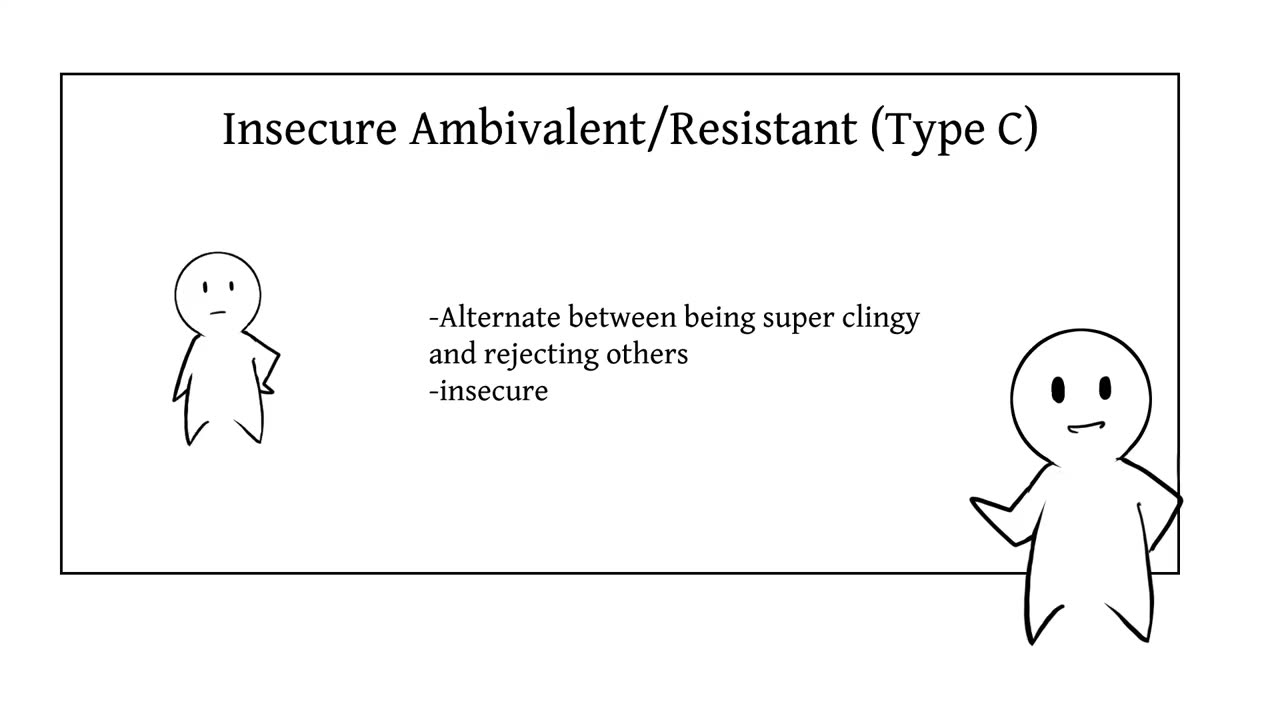Premium Only Content

How Your Childhood Affects Your Life
In the previous video, we briefly discussed attachment styles and how each type responds to parenting, relationships, friendships, and outlook on life. In this video, Psych2Go aims to explore each of the four attachment styles: Secure (type B), Avoidant Insecure (type A), Ambivalent/Resistant Insecure (Type C), and Disorganized. And how each type functions at work or school, relationships, and crises.
Hope it is useful. Thank You
Credit
Screenwriter: Amy
Script Editor: Kelly Soong
VOICE OVER: Amanda Silvera
Animation creator: Gabriella
YouTube Manager: Cindy Cheong
Reference:
Levy, K.N., Ellison, W.D., Scott, L.N., & Bernecker, S.L. (2011). Attachment style. Journal of clinical psychology, 67(2), 193-203.
Solomon, J., & George, C. (Eds.). (2011). Disorganized attachment and parenting. Guilford Press.
Feeney, J. A., & Noller, P. (1990). Attachment style as a predictor of adult romantic relationships. Journal of Personality and Social Psychology, 58(2), 281.
Bartholomew, K., Henderson, A., & Dutton, D. (2012). Insecure attachments and violent intimate relationships. In Adult attachment and couples psychotherapy (pp. 67-85). Routledge.
Davila, J., Burge, D., & Hammen, C. (1997). Why do attachment styles change? Journal of personality and social psychology, 73(4), 826.
Vicedo, Marga (14 February 2017). "Putting attachments in their place: Disciplinary and cultural contexts". European Journal of Developmental Psychology.14(6): 684–699. doi:1080/17405629.2017.1289838.
Mikulincer, M. (1995). Attachment styles and mental representations of the self. Journal of Personality and Social Psychology, 69(6), 1203.
-
 LIVE
LIVE
Akademiks
51 minutes agoDay 2/30. Drake Challenges UMG and calls them Desperate. Ye Backs Drake. Lil Wayne Dont Fw Superbowl
7,142 watching -
 LIVE
LIVE
MyronGainesX
18 hours ago $10.97 earnedKarmelo Anthony Merch, Ashley EXPOSES Elon, Filipino President Punishes Vitaly, Iran War Pause!
2,206 watching -
 2:41:54
2:41:54
TimcastIRL
3 hours agoMASS SHOOTING At Florida State, Anti Trump Rumors ERUPT, MANGIONE EFFECT w/ Maggie Moda| Timcast IRL
123K58 -
 2:36:29
2:36:29
The Illusion of Consensus
1 day agoExploring Holistic Psychiatry with Dr. Aruna Tammala: Nervous System Regulation, Diet, Supplements, Self-love, and Social Connection
231 -
 LIVE
LIVE
Laura Loomer
2 hours agoEP115: Democrats' Pet Muslims Bite Back
1,074 watching -
 18:37
18:37
SantaSurfing
6 hours ago4/17/2025 - Trouble for Tish/Google/Jerome! Trump stops a war!
7.21K14 -
 LIVE
LIVE
Man in America
10 hours agoThey’re Feeding Us POISON and Calling It Dinner w/ Kim Bright
977 watching -
 LIVE
LIVE
BrancoFXDC
48 minutes agoWarzone Rounds - DAY 10 of no Internet
224 watching -
 1:17:17
1:17:17
RiftTV/Slightly Offensive
5 hours ago $3.23 earnedMASSACRE at FSU: Who was Actually RESPONSIBLE? | Slightly Offensive
10K11 -
 LIVE
LIVE
SilverFox
2 hours ago🔴LIVE - HUGE UPDATE! LORDS OF THE FALLEN 2.0
125 watching